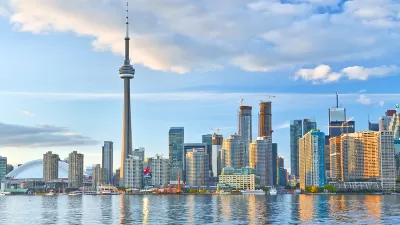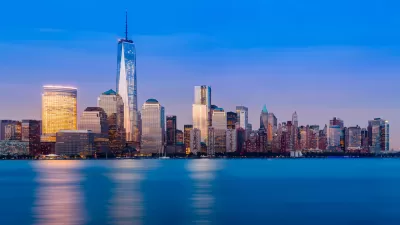One architecture critic addresses two skyscraper-related conundrums: Decorative lighting that tops the buildings are energy inefficient, and they are dangerous to migrating birds.
"New York structural engineer David Scott, the chairman of the Chicago-based Council on Tall Buildings and Urban Habitat, put that point in a broader context when I reached him by phone on Monday.
'If you just turned everything off, you would lose a lot of the [urban] vibrancy,' he said. 'If you weigh up the efficiencies you get by people working and living in a city, particularly a city that's served by public transport, you can afford to be generous with some of the lighting.' Many skyscrapers around the world, particularly in Hong Kong, are now lit with LEDs that use far less energy than conventional spotlights, he added.
Call it the 'bright lights, big city' theory of urban planning: By doing a modest amount of decorative lighting, either atop of a building or in places that accent key architectural features, you prevent the city from feeling like a ghost town. That encourages more people live in dense urban areas. And density saves energy. You spend a little energy to save a lot of energy.
A green city is not a blacked-out city."
FULL STORY: Must skyscrapers be bird-killers? Not necessarily

Planetizen Federal Action Tracker
A weekly monitor of how Trump’s orders and actions are impacting planners and planning in America.

Maui's Vacation Rental Debate Turns Ugly
Verbal attacks, misinformation campaigns and fistfights plague a high-stakes debate to convert thousands of vacation rentals into long-term housing.

San Francisco Suspends Traffic Calming Amidst Record Deaths
Citing “a challenging fiscal landscape,” the city will cease the program on the heels of 42 traffic deaths, including 24 pedestrians.

Defunct Pittsburgh Power Plant to Become Residential Tower
A decommissioned steam heat plant will be redeveloped into almost 100 affordable housing units.

Trump Prompts Restructuring of Transportation Research Board in “Unprecedented Overreach”
The TRB has eliminated more than half of its committees including those focused on climate, equity, and cities.

Amtrak Rolls Out New Orleans to Alabama “Mardi Gras” Train
The new service will operate morning and evening departures between Mobile and New Orleans.
Urban Design for Planners 1: Software Tools
This six-course series explores essential urban design concepts using open source software and equips planners with the tools they need to participate fully in the urban design process.
Planning for Universal Design
Learn the tools for implementing Universal Design in planning regulations.
Heyer Gruel & Associates PA
JM Goldson LLC
Custer County Colorado
City of Camden Redevelopment Agency
City of Astoria
Transportation Research & Education Center (TREC) at Portland State University
Jefferson Parish Government
Camden Redevelopment Agency
City of Claremont




























